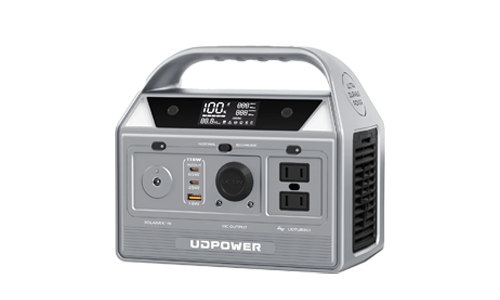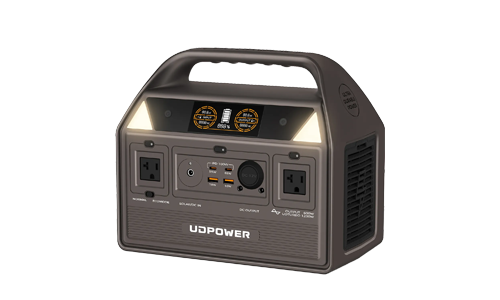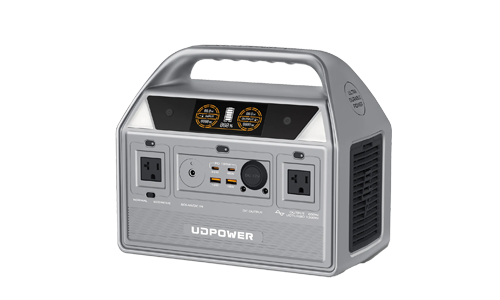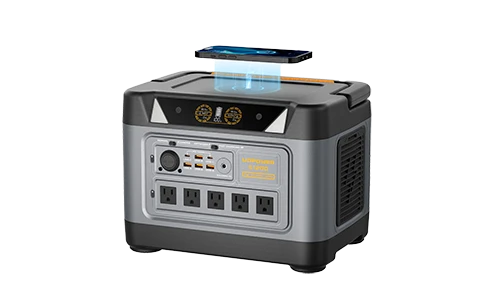How Many Amps Does a Light Bulb Use?
ZacharyWilliamIf you’ve ever looked at a light bulb and wondered, “How many amps is this actually pulling from my outlet?” you’re not alone. Understanding amp draw is essential for avoiding overloaded circuits, sizing backup power, and planning for emergencies or off-grid setups.

Quick Answer: Typical Amp Draw for Common Bulbs
In a standard U.S. home (120V electrical system), here’s the rough amp draw for typical light bulbs:
The key formula is: Amps (A) = Watts (W) ÷ Volts (V). In the U.S., general-purpose outlets and light fixtures are normally on 120 volts, so you can quickly estimate amps by dividing watts by 120.
Amps, Watts, and Volts: The One Formula You Need
Light bulbs are usually labeled in watts (W), but your breaker and wiring care about amps (A). To connect the dots, use this simple relationship:
Amps (A) = Watts (W) ÷ Volts (V)
In the U.S., standard household lighting and outlets run at about 120 volts. That means a 60-watt bulb uses:
60W ÷ 120V ≈ 0.50 amps
Once you know the wattage of a bulb and the voltage of your system, you can figure out how many amps a single bulb (or a group of bulbs) will draw from the circuit.
Typical Amp Draw by Light Bulb Type
Different types of bulbs produce similar brightness using very different amounts of power. Here’s how common bulbs compare on a 120V circuit.
| Bulb Type | Typical Wattage | Approx. Amps at 120V | Typical Use |
|---|---|---|---|
| Incandescent (old-style) | 40W | ≈ 0.33A | Soft lighting, lamps |
| Incandescent | 60W | ≈ 0.50A | Older ceiling fixtures, lamps |
| Incandescent | 75W | ≈ 0.63A | Bright task lighting |
| Incandescent | 100W | ≈ 0.83A | Very bright rooms, garages |
| CFL (compact fluorescent) | 13W (“60W-equiv”) | ≈ 0.11A | General indoor lighting |
| CFL | 18W (“75W-equiv”) | ≈ 0.15A | Brighter rooms |
| LED | 9W (“60W-equiv”) | ≈ 0.08A | Most modern ceiling fixtures |
| LED | 12W (“75W-equiv”) | ≈ 0.10A | Brighter great rooms, kitchens |
| LED night light | 1W | ≈ 0.01A | Hallways, kids’ rooms |
The big takeaway: LED bulbs use a fraction of the amps that incandescent bulbs do for the same brightness. That’s not just good for your power bill—it matters for circuit loading and for how many lights you can safely run on backup power.
How to Calculate the Amps for Any Light Bulb
You don’t have to guess. You can calculate a bulb’s amp draw in a few seconds using the printed wattage.
1. Find the wattage on the label
- Look for a number like 9W, 60W, or 100W.
- On LED bulbs, you’ll often see both “actual watts” and “equivalent watts.” Use the actual watts.
2. Divide by your line voltage (120V in the U.S.)
Use the formula: amps = watts ÷ 120.
- 9W LED → 9 ÷ 120 ≈ 0.075A
- 60W incandescent → 60 ÷ 120 = 0.50A
- 100W incandescent → 100 ÷ 120 ≈ 0.83A
How Many Amps Do My Home Lights Use?
Most modern homes use primarily LED bulbs, so the total amp draw of your lighting is usually quite low compared with big appliances like microwaves, hair dryers, or space heaters.
Example: One room
- Ceiling fixture with 4 × 9W LED bulbs
- Total power = 4 × 9W = 36W
- Amps = 36W ÷ 120V = 0.30A
That’s less than a third of an amp—extremely light compared with the capacity of a 15A or 20A circuit.
Example: Whole small house (LED)
- 30 LED bulbs across the home
- Each is 9W → 30 × 9W = 270W total
- Amps = 270W ÷ 120V ≈ 2.25A
Even with all the lights on, you’re only using a couple of amps—well within the capacity of a single lighting circuit.
If you still have older incandescent bulbs, your lighting amp draw will be much higher. Swapping them for LEDs not only saves energy but also frees up circuit capacity.
Circuit Limits: How Many Light Bulbs Can One Circuit Handle?
U.S. homes typically use 15-amp or 20-amp breakers for lighting and general outlets. To stay safe and meet common guidelines, electricians often aim to stay at or below about 80% of the breaker rating for continuous loads.
| Circuit Size | 80% Safe Power | 60W Incandescent | 9W LED (60W-equiv) |
|---|---|---|---|
| 15A @ 120V | ≈ 1,440W | ≈ 24 bulbs | ≈ 160 bulbs |
| 20A @ 120V | ≈ 1,920W | ≈ 32 bulbs | ≈ 210 bulbs |
In real homes, you’ll rarely push a circuit that hard because the same breaker may feed outlets, lamps, and other devices. But this shows why LED lighting dramatically reduces the risk of overloading a lighting circuit.
How Many Amps Do Light Bulbs Use on a Portable Power Station?
When you’re running lights from a portable power station or solar generator, the same math applies: amps = watts ÷ 120. The difference is that now you also care about battery capacity (watt-hours) and inverter output (watts).
Knowing your light bulbs’ wattage helps you estimate how long a portable power station can keep them on during a power outage, camping trip, or off-grid night.
Example: Using UDPOWER Stations for Emergency Lighting
Below are illustrative examples based on published specs. Actual runtime varies with temperature, battery age, and what else you’re powering.
The C400 Portable Power Station pairs a 256Wh LiFePO₄ battery with a 400W pure sine wave output and about 800W surge capacity, with 4,000+ cycles and around 1.5-hour fast charging capability.
If you power a string of 8 × 9W LED bulbs (about 72W total), the C400 can roughly run those for around 3 hours on a full charge, assuming some inverter losses.

The C600 steps up to a 596Wh LiFePO₄ battery, a 600W rated output (up to 1,200W surge), and 4,000+ cycles, with multiple AC and USB ports and about 1.5-hour fast charging.
With the same 8-bulb, 72W LED setup, that’s on the order of 7 hours of lighting— plenty for an evening outage or several nights of camping if you’re conservative.

For more serious home backup, the S1200 Portable Power Station offers about 1,190Wh capacity, a 1,200W rated pure sine wave output (up to 1,800W with boost), 4,000+ LiFePO₄ cycles, roughly 1.5-hour fast charging, and 5 AC outlets plus 10 DC ports.
Powering 10 × 9W LED bulbs (90W total), you’re looking at roughly 10–12 hours of continuous lighting on a full charge—long enough to get through an overnight outage with all key rooms lit.

Rule of thumb for runtime: Runtime (hours) ≈ Battery Wh × 0.8 ÷ Load Watts. The 0.8 factor accounts for inverter and system losses.
If you mainly want to keep lights and small electronics going during outages, even a compact unit like the C400 or C600 can handle a surprising number of LED bulbs while staying well within their watt and amp limits.
LED lighting’s low amp draw makes it a perfect match for portable power stations—more hours of light from the same battery capacity, with quieter, cleaner operation than a gas generator.
Safety Tips: Light Bulbs, Amps, and Your Home Wiring
Match bulb watts to fixture ratings
- Never exceed the maximum wattage printed on a lamp or fixture.
- Using a lower-wattage LED in a higher-wattage-rated fixture is usually safe and more efficient.
Watch total load on power strips
- Power strips are typically rated around 15A.
- Remember that other devices (computers, TVs, heaters) add to the total amps on that strip and circuit.
Look for warning signs
- Repeated breaker trips on the same circuit.
- Warm or discolored outlets, plugs, or switch plates.
- Flickering lights when other loads start (like a microwave or AC).
When in doubt, call a pro
- A licensed electrician can check for overloaded circuits, loose connections, or outdated wiring that may need upgrades.
FAQs: How Many Amps Does a Light Bulb Use?
How many amps does a 60-watt light bulb use?
On a 120V U.S. circuit, a 60W incandescent bulb uses about 0.5 amps (60 ÷ 120 = 0.50A). A “60W-equivalent” LED usually draws only about 9 watts, which is roughly 0.08 amps.
How many amps does a 100-watt bulb use?
At 120V, a 100W incandescent bulb draws about 0.83 amps (100 ÷ 120 ≈ 0.83A). Modern 100W-equivalent LEDs might only use 14–17 watts, or roughly 0.12–0.15 amps.
Can I overload a circuit with just light bulbs?
It’s possible but less common in homes that use mostly LEDs. With old incandescent bulbs, a lot of fixtures on the same circuit—plus plug-in lamps and other electronics—can push a 15A breaker toward its limit. If a breaker frequently trips, have an electrician check the circuit.
Do LED bulbs draw fewer amps than incandescent bulbs?
Yes. For the same brightness, LED bulbs typically use about 75–85% less power than incandescent bulbs, which translates directly into fewer amps drawn from the circuit.
Is it safe to run light bulbs on a portable power station?
Generally yes, as long as you stay within the power station’s rated wattage and use compatible plugs and cords. LED bulbs are especially well suited for portable stations, because their low watt and amp draw gives you many hours of light from a relatively small battery.
How do I estimate runtime for lights on a battery backup?
Add up the total wattage of all the bulbs you’ll power, then use: Runtime ≈ Battery Wh × 0.8 ÷ Load W. The 0.8 factor accounts for inverter and system losses. Compare that load with the power station’s output rating to ensure it’s well within limits.











